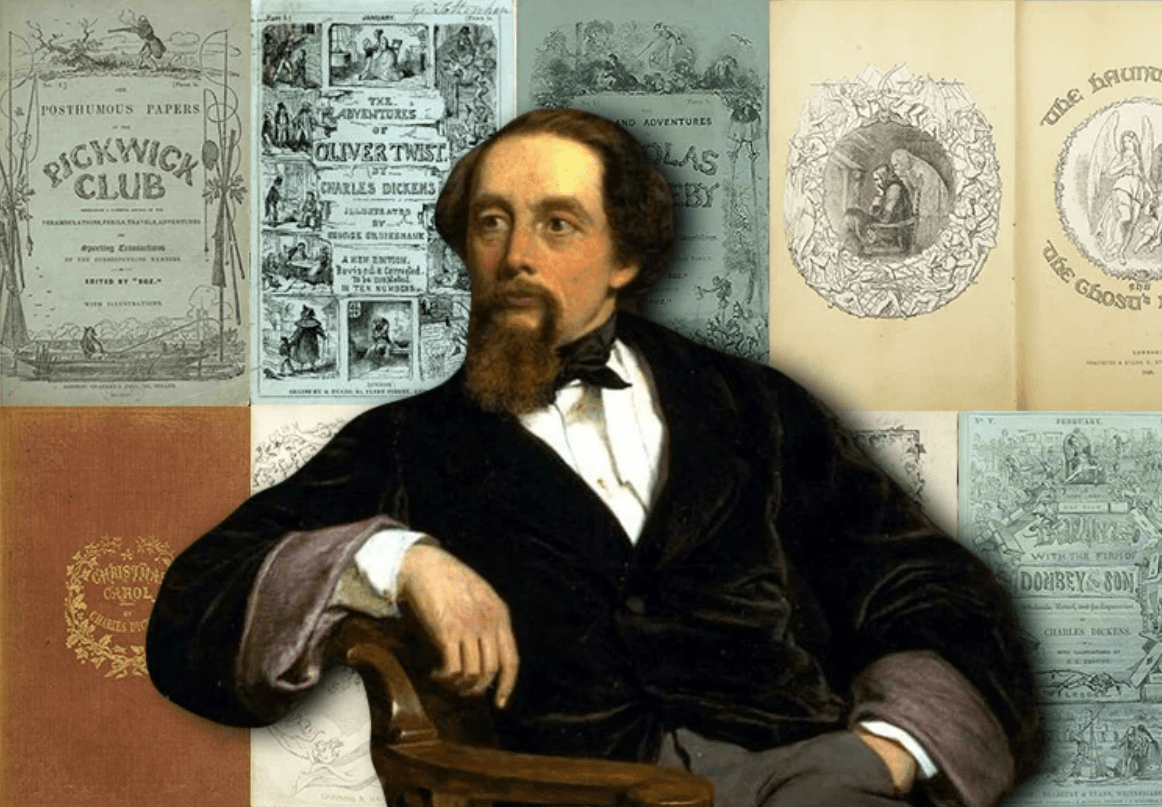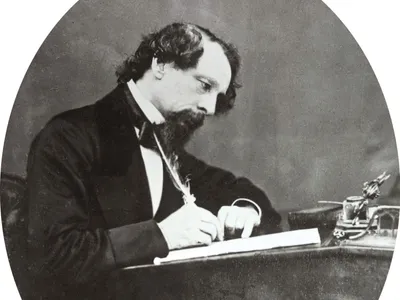
How many characters did Dickens create?
Charles Dickens created over 900 characters throughout his literary career. His novels are known for having a wide array of characters, ranging from vividly-drawn protagonists to minor characters who play brief but memorable roles.
What style of writing does Charles Dickens use?
Charles Dickens is known for his highly descriptive prose and his ability to create detailed settings and characters. His writing is often lively and humorous, punctuated by moments of profound emotional depth. His narratives also feature intricate plot structures and complex social commentary.
What techniques does Charles Dickens use?
Charles Dickens employed a variety of literary techniques in his writing. He was skilled at using imagery and metaphor to communicate deeper meanings, and he often used irony and satire to criticize social inequities. His novels also feature multiple plot lines that weave together to create a larger narrative whole.
What are the characteristics of Charles Dickens writing?
Charles Dickens’ writing is characterized by his vivid imagination, his social consciousness, and his ability to create memorable, larger-than-life characters. His writing is known for its imaginative and descriptive power, as well as its skill to seize the richness and variety of human experience.
What are the themes of Charles Dickens novels?
Charles Dickens’ novels often explore themes of social justice, morality, and the nature of human relationships. He was particularly concerned with issues of poverty, inequity, and the plight of the working classes, and his novels often critique the institutions of Victorian society.
What was the aim of Charles Dickens writing?
Charles Dickens was driven by a desire to expose the injustices of Victorian society and to advocate for social reform. He used his writing to rouse awareness about social problems and to inspire readers to take act to address them.
The types of character evolution in Dickens’ Works
Dickens’ novels are filled with dynamic, multi-dimensional characters. He didn’t use cardboard cut-out characters, instead, he created people, with various character traits, emotions, beliefs, and backgrounds, and followed them through the story arcs with keen observation. There are generally two types of character evolution in his works:
-
Positive Character Evolution
Positive character evolution refers to a character’s increasingly positive development throughout the course of the story. A flawed character develops into a better one as he learns life lessons through challenges and struggles. The most exemplary character which illustrates this type of evolution is Ebenezer Scrooge, from the novel, A Christmas Carol. Initially, Scrooge is a miserly, selfish, and grumpy old man, who hates the world and the people around him. However, he learns the errors of his ways during his encounters with the spirits of Christmas, and his heart transforms into a kind and compassionate person.
-
Negative Character Evolution:
Negative character evolution refers to a character’s increasingly destructive behavior throughout the course of the story. This type of character transformation is often seen in villains or antagonists of the story. A classic example of this would be Miss Havisham’s character from Dickens’ novel Great Expectations. Miss Havisham begins as a heart-broken young lady, betrayed by her fiancé, who refuses to leave her home and remains there perpetually, living in a state of despair. Slowly but surely, she becomes manipulative, vengeful, and cruel by inflicting psychological torture on the protagonist and her ward.
What are the literary influences of Charles Dickens?
Charles Dickens was influenced by a range of literary traditions, including the Gothic, the picaresque, and the sentimental novel. He was particularly influenced by the work of writers like Henry Fielding, Laurence Sterne, and William Shakespeare, as well as literary and popular culture of his own time.
Factors influencing Character Evolution in Dickens’ Works
Apart from the two types of character evolution mentioned above, there are various factors that influence the evolution of the character in Charles Dickens’ works. Some of them are:
-
Social and Economic Condition
Dickens’ novels were written during the Victorian era, and most of his characters belonged to the lower class. The social and economic conditions of that time significantly influenced the characters’ development, and Dickens portrayed their struggles in the most realistic way possible.
-
Personal Experiences
The experiences of Dickens’ personal life inspired some of his characters, and he projected his own emotions onto them, which made these characters more relatable and human.
-
Influence of Other Characters
In most of Dickens’ novels, the supporting characters play a significant role. Be it in shaping the protagonist’s behavior and evolution of their personality.
Conclusion
In conclusion, Charles Dickens’ works stand out as some of the most remarkable literature ever written. In no small part due to his skill for creating dynamic, multi-dimensional characters. We hope you enjoyed the blog post of Languages Unlimited about The manner of character evolution in Charles Dickens’s Works. He skillfully portrayed emotional, psychological, and behavioral development within his characters, leaving a lasting impact on the readers’ minds. Dickens’ characters became a model for other writers to follow in terms of character development.

